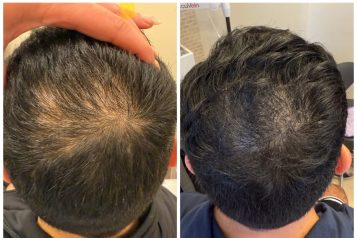The medical world is buzzing, and if you haven’t heard, spasticity treatment is on the rise big time. Experts predict that the global spasticity treatment market will jump from $5.7 billion in 2025 to a staggering $8.8 billion by 2034, growing at a steady 4.9% annual rate.
So, what’s behind this surge? More advanced treatments, better healthcare infrastructure, and an increasing number of patients seeking relief. With 12 million people worldwide affected by spasticity (per the American Association of Neurological Surgeons), the demand for innovative therapies is at an all-time high.
 Photo Credit: New Africa/Shutterstock
Photo Credit: New Africa/Shutterstock
What Is Spasticity?
Spasticity is a neurological condition that causes muscle stiffness, tightness, and involuntary spasms. It typically results from damage to the brain or spinal cord, making everyday movements challenging. The good news? Cutting-edge treatments are making a world of difference.
What’s Driving the Growth?
- Botulinum Toxin Injections Are Leading the Charge: Injectable treatments like Botox aren’t just for wrinkles—they’re now a go-to solution for spasticity relief. These injections relax overactive muscles, making movement easier and improving the quality of life.
- The Rise of Combination Therapies: Doctors are getting creative, combining therapies like physical rehabilitation, medications, and injections for more effective, long-lasting results.
- Neurostimulation Technologies Are Game-Changers: Imagine technology that retrains your muscles—that’s the future of spasticity treatment! Neurostimulation devices help reprogram nerve signals, reducing spasms and stiffness with minimal invasiveness.
Trends Shaping the Future
- More Neurological Cases, More Innovation: With conditions like stroke, multiple sclerosis, and cerebral palsy on the rise, the demand for effective spasticity treatments is skyrocketing. Expect even more research, new drug developments, and groundbreaking tech in the coming years.
- Less-Invasive, More Effective Treatments: Minimally invasive options are in high demand; patients want faster recovery times, fewer side effects, and better results.
- A Focus on Quality of Life: It’s not just about managing symptoms; it’s about helping people move, function, and live better. The industry is prioritizing holistic, patient-centered approaches that make a real difference.
Challenges Ahead
- High Treatment Costs: Cutting-edge therapies come at a price, and accessibility remains a challenge, especially in developing regions.
- Side Effects Exist: While treatments like botulinum toxin are effective, they aren’t risk-free. Potential side effects like muscle weakness and injection site pain need to be carefully managed.
- Limited Awareness: In some areas, spasticity treatment isn’t widely understood or accessible, making education and awareness campaigns more important than ever.
With massive growth, groundbreaking innovations, and a push for better quality of life, the future of spasticity treatment is brighter than ever. As new therapies emerge, patients can expect more options, better outcomes, and a future with greater mobility and comfort.
So, if you’re keeping an eye on medical advancements that truly change lives, this is one space to watch.





















